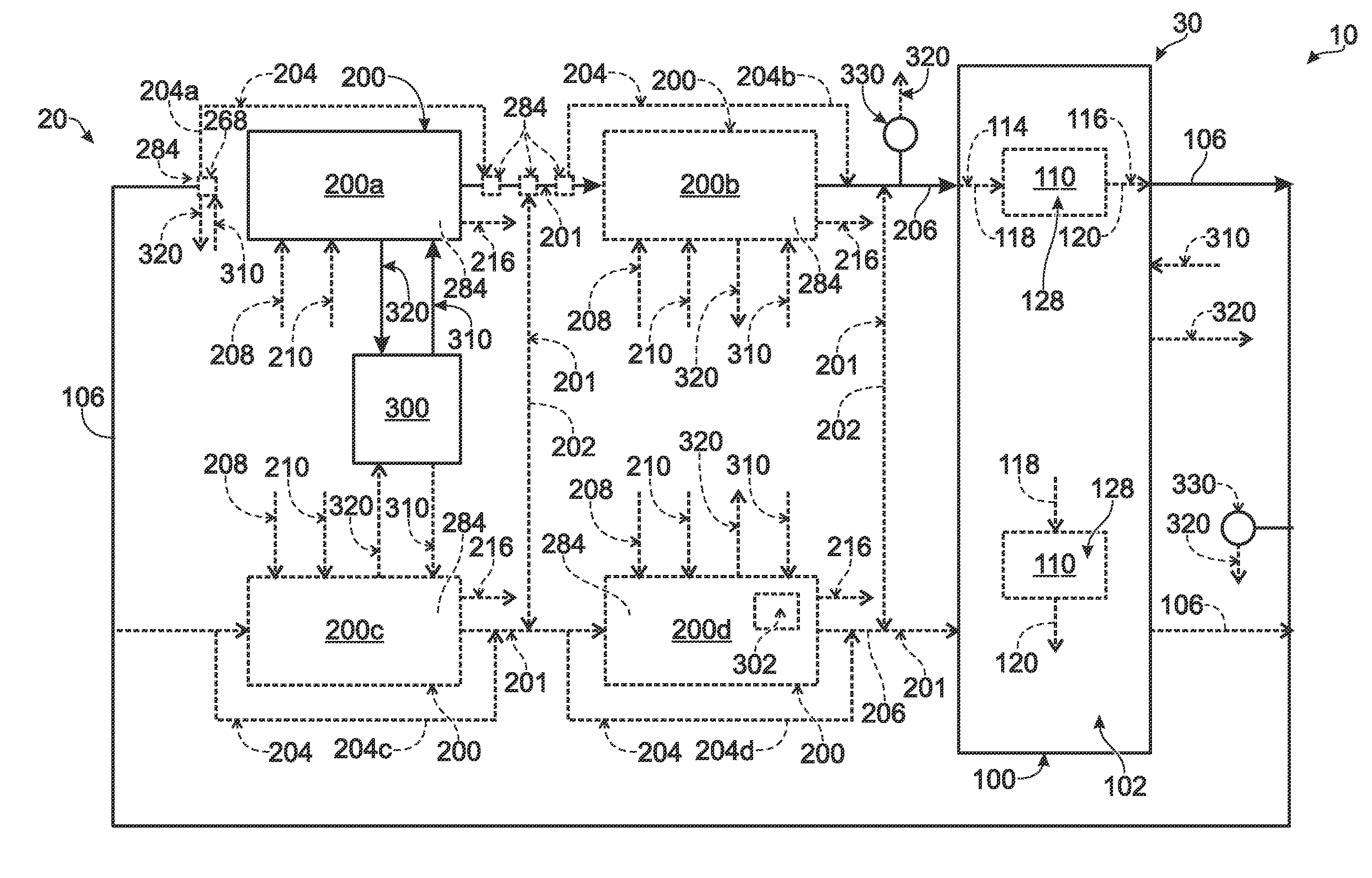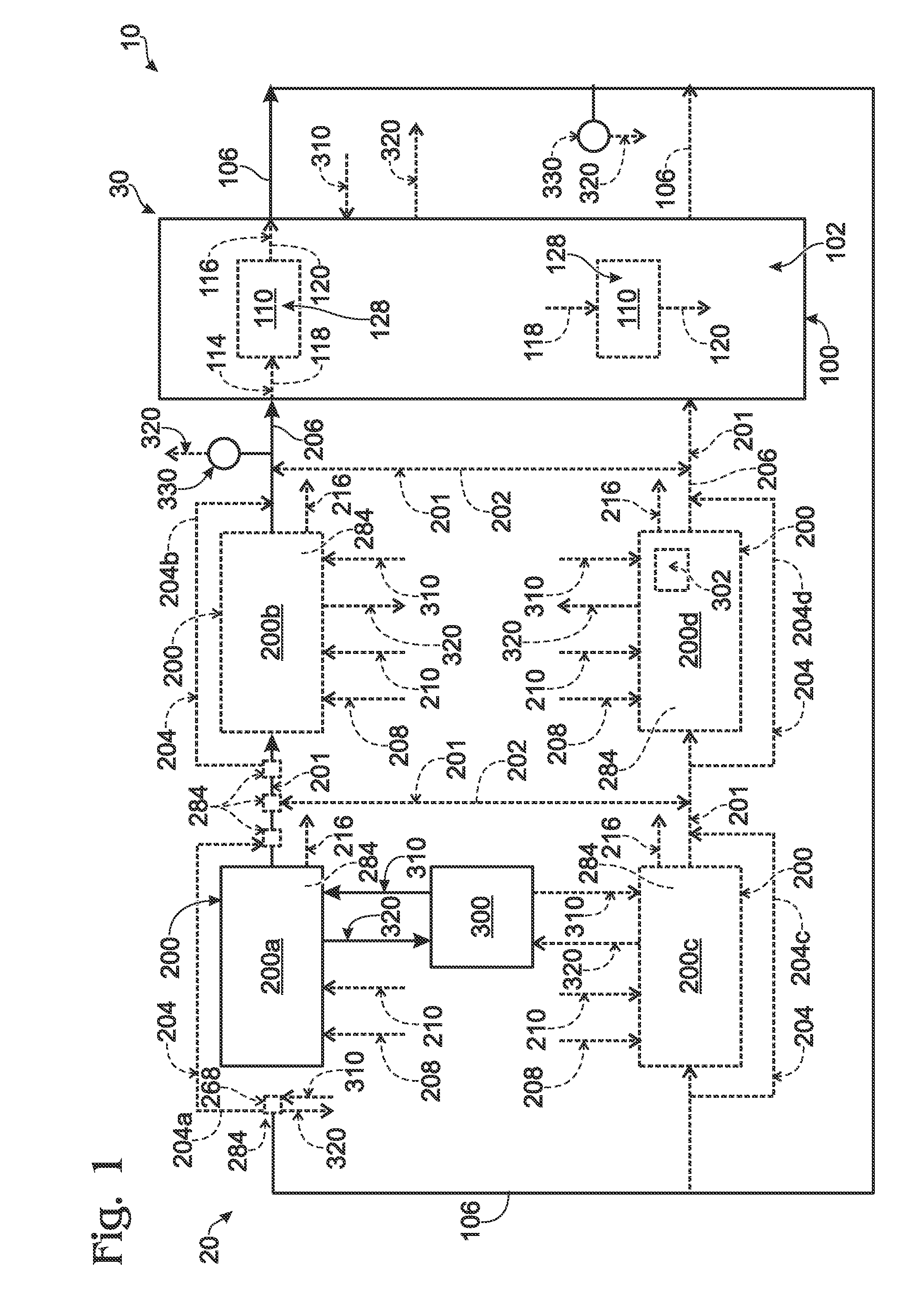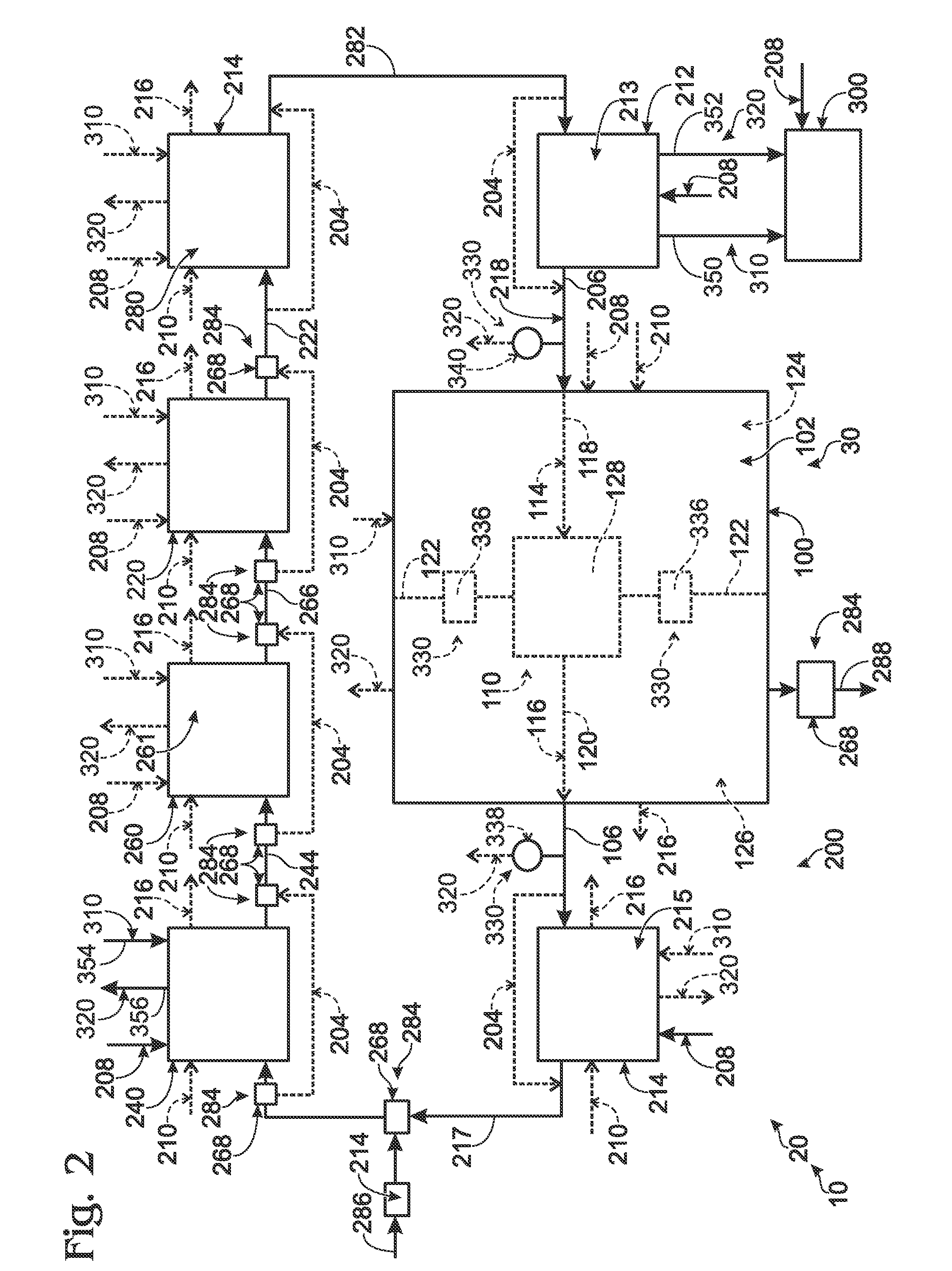Systems and methods for cooling data centers and other electronic equipment
- Summary
- Abstract
- Description
- Claims
- Application Information
AI Technical Summary
Benefits of technology
Problems solved by technology
Method used
Image
Examples
Embodiment Construction
[0027]Illustrative, non-exclusive examples of an environmental control system 10 according to the present disclosure are shown schematically in FIG. 1. Environmental control system 10 includes an environmental control assembly 20 and a space 30 to be controlled. As discussed in more detail herein, space 30 may be, or include, an enclosed space 100, which may be a data center or other space designed to house operating electrical (such as computing and / or communications) equipment. Environmental control assembly 20 receives a return air stream 106 from space 30, processes return air stream 106 as a process air stream 201 internal to the environmental control assembly, generates supply, or discharge, air stream 206, and supplies discharge air stream 206 back to space 30. In a general sense, environmental control assembly 20 may control the temperature, pressure, relative humidity, and / or other variables impacting the local environment within space 30 by processing return air stream 106...
PUM
 Login to View More
Login to View More Abstract
Description
Claims
Application Information
 Login to View More
Login to View More - R&D
- Intellectual Property
- Life Sciences
- Materials
- Tech Scout
- Unparalleled Data Quality
- Higher Quality Content
- 60% Fewer Hallucinations
Browse by: Latest US Patents, China's latest patents, Technical Efficacy Thesaurus, Application Domain, Technology Topic, Popular Technical Reports.
© 2025 PatSnap. All rights reserved.Legal|Privacy policy|Modern Slavery Act Transparency Statement|Sitemap|About US| Contact US: help@patsnap.com



